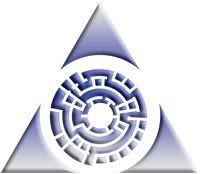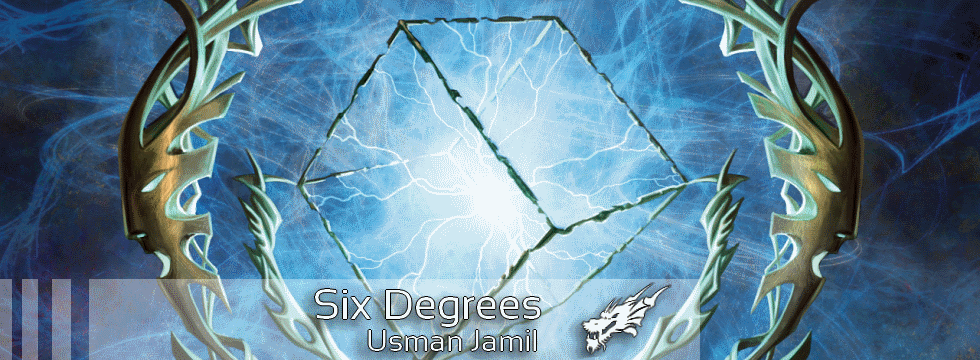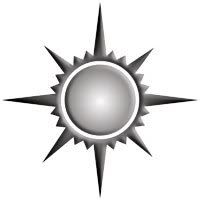Are you a Quiet Speculation member?
If not, now is a perfect time to join up! Our powerful tools, breaking-news analysis, and exclusive Discord channel will make sure you stay up to date and ahead of the curve.
One of the keys to having a successful cube is to approach it from a holistic view. Looking at the individual colors is useful since it allows you to understand the strengths and weaknesses of the colors themselves and the color's archetypes. In cube, playing to a color's available strengths helps it perform optimally; for example, building a red section with little aggressive support will lead to weak red decks since red's many aggressive archetypes won't be adequately supported.
In this article, I'll be discussing the strengths, weaknesses and archetypes within white.
Strengths:
One of white's strengths is its extremely efficient creature base at the 1-2 mana slot. These creatures are among the most efficient sources of damage in the game. White's 2-power, 1-mana creatures are no exception and unlike the 2-power 1-mana creatures in red, blue and green, white's come with virtually no drawbacks.
- Savannah Lions
- Isamaru, Hound of Konda
- Elite Vanguard
Its 2-mana aggressive creatures are also extremely efficient, combining already solid power/toughness with evasion, protection, or other useful abilities.
- Kor Skyfisher
- Soltari Priest
- White Knight
- Knight of Meadowgrain
White is able to create token armies from several cards, which combine wonderfully with cards like Tangle Wire and Smokestack. These token generators are also better against spot removal and are able to provide many chump blockers against non-trampling attackers.
- Cloudgoat Ranger
- Spectral Procession
- Elspeth Tirel
- Decree of Justice
Another powerful strength that white has is in its “anthem” effects, cards that increase the power of threats deployed in the earlier stages of the game. Anthem effects that are built into creatures are especially powerful since they allow aggressive decks to keep their crucial creature counts high.
- Soltari Champion
- Pianna, Nomad Captain
- Hero of Bladehold
- Accorder Paladin
White's spot creature removal suite is amongst the most efficient in the game, with targeted spells able to deal anything that doesn't have protection from white.
- Swords to Plowshares
- Path to Exile
- Temporal Isolation
- Journey to Nowhere
Additionally, white's suite of powerful mass-removal allow control and midrange decks to stabilize in the later stages of the game, allowing those decks to capitalize on card advantage when blowing out an unprepared opponent.
- Wrath of God
- Day of Judgment
- Akroma's Vengeance
- Catastrophe
White is also able to deal with artifacts and enchantments, allowing decks to deal with just about everything else.
- Kor Sanctifiers
- Seal of Cleansing
- Disenchant
- Oblivion Ring
- Faith's Fetters
Planeswalkers are a present strength of white as all 4 white planeswalkers are excellent cards in cube. This strength may wane over time as more powerful planeswalkers are printed for other colors, but presently one of white's major strengths is in the quantity and quality of its planeswalkers.
Weaknesses:
Many of white's most powerful cards have restrictive mana costs, with at least WW in their mana cost. Looking at my cube, out of the 61 cards in each color, blue had 25 cards with double colored mana in its cost, black had 25 cards, red had 19 cards, and green had 24 cards, all in stark contrast to 30 cards in white with WW in the mana cost.
This is problematic in decks like BW since it can be difficult to have a deck with cards like White Knight and Vampire Nighthawk since the mana may not work in games. Tom LaPille's cube had many 2-mana creatures to help enable aggressive strategies, but he was careful to include many creatures with a mana cost of 1W such as Mistral Charger.
Another weakness that must be considered for white decks, especially white-based control, is that many of its most powerful cards cost 4 mana.
- Wrath of God
- Day of Judgment
- Armageddon
- Ravages of War
- Moat
- Ajani Goldmane
- Elspeth, Knight-Errant
- Hero of Bladehold
- Calciderm
- Kor Sanctifiers
Opportunities and Threats – Archetypes:
Now that I have discussed what white's strengths and weaknesses are I'll now go into what white brings to the decks that use its cards. Since many decks are two-colored I'll discuss what white gives to the guild-aligned decks, whether the decks are best utilized as aggressive, midrange, or control, and how mono-white decks are represented as well.

White-Blue (Azorius) – Control
One of the main tools that white brings to WU control is the ability to deal with permanents that slipped through countermagic, and cards like Great Sable Stag and Thrun, the Last Troll which can't be countered at all. Blue has few ways of dealing with these types of threats, often relying on artifact-based mass-removal effects like Oblivion Stone and Nevinyrral's Disk, which are very slow, and steal effects like Control Magic, which are useless against cards like Blastoderm and Braids, Cabal Minion.
Due to the fact that removal like Swords to Plowshares and Disenchant can destroy opposing creatures and artifacts very cheaply, it is very important to ensure that these tools are available for blue-white control decks so they can protect themselves in the early stages of the game. Cards like Knight of Meadowgrain and token generators like Spectral Procession also perform a similar role, giving a blue-white player time to stabilize and to think.
White also brings powerful mass-removal effects to white-blue decks. Since many of these decks do not use many creatures, typically a card like Rout is at its best in white-blue since it penalizes these kinds of decks the least when cast. Artifact-based mass-removal typically costs more mana and time than the white options, which can be the difference between a win from stabilizing at 4 life or death.
White's plethora of planeswalkers are exceptional in white-blue control since the deck is able to protect the planeswalkers very easily. While a more aggressive-leaning planeswalker like Ajani Goldmane supports aggressive decks, blue-white's ability to protect allows planeswalkers like Elspeth, Knight Errant and Elspeth Tirel to survive for many turns.
White provides upgrades for black's 1-mana creatures, with creatures like Savannah Lions being better than creatures like Carnophage. Black already has many good 2-mana creatures like Dark Confidant and Nezumi Graverobber, so white's excellent 2-drops aren't as necessary for the deck, but the excellent creatures still provide white-black decks with a critical mass of early bodies.
Black's creature removal options are mostly upgraded through cards like Swords to Plowshares and Path to Exile, but those cards aren't as important since black already has cards like Terror and creatures like Bone Shredder and Skinrender, which combine creature kill with a body. White can continue with this theme with its creatures like Pianna, Nomad Captain, increasing the power of the attacking team without lowering the number of creatures in the deck.
However, white's artifact and enchantment removal cards are very important for WB decks, since one of black's weakness is its inability to deal with troublesome artifacts or enchantments, like Mimic Vat.
Black's suite of hand disruption through cards like Thoughtseize and Hypnotic Specter is supported extremely well by white's mass-land removal cards. It's an excellent strategy, similar to the one that Suicide Black and Necropotence decks both employed: disrupt the opponent with cards like Strip Mine and Hypnotic Specter then win through efficient creature damage before the opponent can recover.
Similarly to WB aggro, WR aggro gets a boost from white's amazing 1-mana creatures. White's 2-mana creatures are especially important as well since the 2-mana creature slot has always been an important spot in the curve of red decks, with cards like Blood Knight, Keldon Marauders, and Hellspark Elemental filling red's mana curve; white's 2-drop creatures are excellent at supporting these aggressive red creatures.
White's efficient creature removal suite helps red decks deal with creatures with higher toughness, a difficult threshold for red decks to cross. Something like Wurmcoil Engine easily circumvents red removal but doesn't dodge a Journey to Nowhere as easily.
Cards like Seal of Cleansing bring the ability to destroy enchantments, since red cannot destroy enchantments on its own. Since red is able to destroy artifacts with cards like Smash to Smithereens, white artifact destruction effects aren't as necessary as they are in WB.
White mass-land removal is useful in white-red decks since Boros decks typically use cards like Molten Rain and Goblin Ruinblaster to disrupt an opponent and a card like Ravages of War can supplement this strategy, stopping an opponent from being able to deal with your threats at all.
WR aggro decks are able to utilize anthem effects similarly to WB aggro decks by providing power boosts to creatures already cast in the early stages of the game.

White-Green (Selesnya) – Aggro and Midrange
Since WG is adept at both aggressive and midrange strategies both will be covered in this section.
Selesnya decks mostly benefit from the addition of white removal. All of the other colors are able to deal with opposing creatures: red can burn them, blue can steal them, and black can destroy them, but green cannot, making cards like Path to Exile and Temporal Isolation extremely important for all WG decks.
In aggressive WG decks, white performs similarly to its role in WB aggro, upgrading 1-drops and providing redundancy to 2-mana creatures. This powerful aggressive creature base supplements green and white's powerful 3 and 4-mana creatures, enabling the deck to end games quickly.
White offers more for midrange decks through its mass removal. A card like Catastrophe is very strong in midrange since it is easy to have stronger creatures than the opponent when Catastrophe resolves, especially with green's excellent 4 and 5-mana creatures. The importance that WU control decks places on mass-removal decks is similar to Selesnya midrange as cards like Rout allow both decks to deal with creatures en masse, which both green and blue can't do.
Monowhite – Aggro
Monowhite aggro represents the classic “white weenie” strategy, using many cheap creatures like Savannah Lions and White Knight to deal lots of damage in the early parts of the game and ending the game through either sheer numbers or a source of artifact damage like Cursed Scroll or Molten-Tail Masticore. Monowhite is able to ignore the drawback of the WW mana costs, in creatures like White Knight and Soltari Priest for example, since the manabase in monowhite decks will be mostly basic Plains.
Monowhite is also the best way to leverage mass land destruction (this is, Armageddon and friends) as weenie decks will have the best creatures in play the quickest, overrunning whatever the opposing deck has set up.
Analysis:
Looking at the overall archetypes that white supports, we can see that white supports 3 aggressive archetypes, 1 midrange archetype and 1 control archetype. While mass-removal effects are very important for decks like blue-white and some white-green decks to have, it is important to ensure that they are not overly represented. Similarly, it is very important to have a high number of 1- and 2-drop aggressive creatures, since the color supports many aggressive archetypes and you want them to be well supported. Having Isamaru, Hound of Konda as the only white aggressive 1-mana creature won't help to support one aggressive deck, let alone potentially three different ones.
I hope that this holistic and deep analysis has helped you to take a look at the cards in your white section to ensure that each archetype gets the tools available to help it to thrive. Understanding a color's strengths and weaknesses is one of the most powerful tools that a cube designer can have and this analysis has aimed to give you such tools.
Thank you very much for reading!
Blog: http://idratherbecubing.wordpress.com
Twitter: @UsmanTheRad








This is fantastic. I can tell this entire series of articles are going to be instant bookmarked essentials that I come back to a lot.
I built a cube of my own and while I do enjoy it, it needs a lot of work. I think this series will be very helpful in making my cube better.
Great article, looking forward to the others.
Very insightful and well structured analysis.
Really liked it.
I’d like to add one thing:
My playgroup loves to explore the archetypes that I support as well as those that I “don’t” support. iE: WB-Control, UW-Tempo, WR-Wildfire-Control for White. Their motivation is to push themselves and me to new things and to annihilate their friends with never-seen-before stuff.
Frankly, when following your way of building a cube, those archetypes happen anyway, since W can be Control and R can be Control, so RW can be Control as well. I keep my cube in the tradition of the MTGS-Forum and the Archetypes, that we have consensus on being the colours greatest strenghts. But those Fringe-archetypes also play a minor role in my evaluation of a card.
I’m not saying that you implied that the model:
1. Worth of a card in the supported archetypes of a colour.
2. Worth of a card in the supported archetypes of a guild.
is the end-all-be-all way of analysing the merits of a card in the environment, but it could seem to some people that you’re excluding fringe-strategies and therefore create a bit a stale metagame, while in reality those unsupported archetypes still happen and can win a draft.
Just a “short” addendum to your article, which clearly is a must-read for every serious cuber/cuban/cubafficionado.
One thing you dodn't mention is that WG tokens/anthem can be a useful strategy. All in all, though, great analysis of White in cube! The 2-color summaries are great!